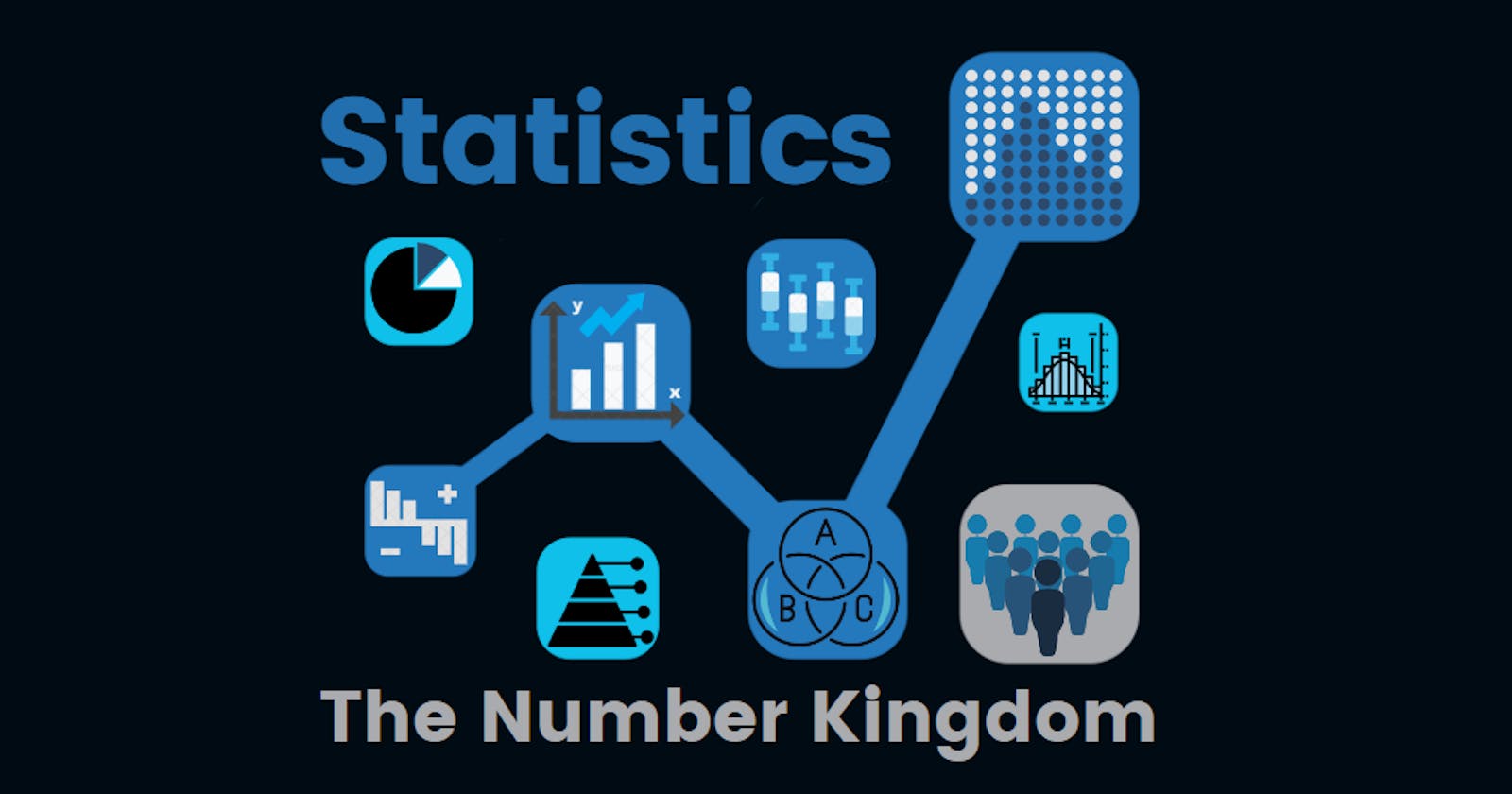Introduction
Welcome to the DataRealm ;)
In the realm of data science, statistics serves as the backbone that empowers us to extract meaningful insights from vast amounts of data. Whether it's exploring patterns, making predictions, or drawing conclusions, statistical analysis plays a vital role in unraveling the hidden stories behind the numbers. In this blog, we will delve into the importance of statistics in data science and how it enables us to make informed decisions and unlock valuable knowledge.
What are the types of Statistics we study?
Statistics can be broadly categorized into two main types: descriptive statistics and inferential statistics. Let's explore each type in more detail:
Descriptive Statistics:
Descriptive statistics involve methods used to describe and summarize data. It aims to provide a clear and concise summary of the main characteristics, patterns, and distributions within a dataset. Descriptive statistics include:
Measures of Central Tendency: These statistics indicate the typical or average value of a dataset. Common measures of central tendency include the mean (average), median (middle value), and mode (most frequently occurring value).
Measures of Dispersion: These statistics describe the spread or variability of data. Examples include the range (difference between the maximum and minimum values), variance (average squared difference from the mean), and standard deviation (square root of the variance).
Percentiles: Percentiles divide a dataset into equal parts, indicating the value below which a certain percentage of the data falls. The median, for instance, represents the 50th percentile.
Frequency Distribution: This displays the count or proportion of observations that fall within different ranges or categories, often presented as histograms or bar charts.
Inferential Statistics:
Inferential statistics involves drawing conclusions or making inferences about a population based on a sample. It uses probability theory and sampling techniques to estimate population parameters, test hypotheses, and make predictions. Inferential statistics include:
Hypothesis Testing: This involves formulating a hypothesis about a population parameter and conducting statistical tests to determine if the observed data provide sufficient evidence to support or reject the hypothesis.
Confidence Intervals: A confidence interval provides a range of values within which a population parameter is likely to fall. It quantifies the level of uncertainty associated with the estimate.
Regression Analysis: Regression analysis examines the relationship between variables and allows for predicting or estimating one variable based on another. It helps identify and quantify the impact of independent variables on a dependent variable.
Analysis of Variance (ANOVA): ANOVA is used to compare means between multiple groups to determine if there are significant differences among them.
Probability Distributions: These describe the likelihood of different outcomes in a random experiment. Common distributions include the normal distribution, binomial distribution, and Poisson distribution, among others.
What is the role of Statistics in the Data Science field?
Learning statistics can greatly contribute to excelling in the field of data science. Here are several key reasons explaining the role of statistics in data science:
Data Exploration and Visualization: Statistics provides the necessary tools and techniques to explore, summarize, and visualize data effectively. Concepts such as measures of central tendency, dispersion, and correlation enable data scientists to gain insights into the underlying patterns and relationships within the data. Statistical visualization techniques help present data in a meaningful and interpretable manner, facilitating effective communication of findings.
Statistical Modeling and Inference: Statistical modeling forms the basis for many data science tasks, including prediction, classification, and clustering. By understanding statistical models, data scientists can select the appropriate techniques to build accurate and robust models. Additionally, statistical inference allows data scientists to make conclusions and predictions about a larger population based on sample data, providing a solid foundation for decision-making.
Experimental Design and A/B Testing: In the realm of data-driven decision-making, experimental design and A/B testing play a crucial role. Statistics equips data scientists with the knowledge and methodologies to design experiments, allocate resources effectively, and analyze the results. This enables the assessment of causality, the comparison of different interventions, and the optimization of strategies based on statistically valid conclusions.
Machine Learning and Predictive Analytics: Machine learning algorithms heavily rely on statistical principles. Understanding statistics helps data scientists grasp the underlying assumptions and concepts employed in various machine learning algorithms. It enables them to evaluate model performance, interpret results, and make informed choices in model selection and optimization. Moreover, statistical concepts like regularization, hypothesis testing, and cross-validation provide a solid framework for addressing common challenges in machine learning.
Data Quality Assessment and Bias Mitigation: Statistics provides the means to assess data quality, identify outliers, and handle missing values. Data scientists equipped with statistical knowledge can make informed decisions on data preprocessing, ensuring the reliability and integrity of their analyses. Moreover, understanding statistical bias and its implications helps mitigate biases in data collection, modeling, and decision-making, promoting fairness and ethics in data science.
Communication and Collaboration: Statistics serves as a common language for data scientists, statisticians, and domain experts. Proficiency in statistics allows effective communication with stakeholders, aiding in the interpretation and presentation of results. It also facilitates collaboration with statisticians in interdisciplinary projects, leveraging their expertise to enhance the quality and rigor of data science endeavors.
Conclusion
Statistics is the bedrock of data science, empowering us to extract knowledge and insights from data. It underpins data exploration, visualization, modeling, inference, and experimentation. By leveraging statistical techniques and principles, data scientists can uncover hidden patterns, make accurate predictions, and make informed decisions in various domains. As the volume and complexity of data continue to grow, statistics remains an indispensable tool for extracting value and driving advancements in the field of data science.
Tune in to wander some more kingdoms beside their kings!
Until then Safe Travels!
